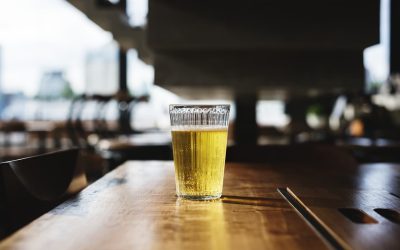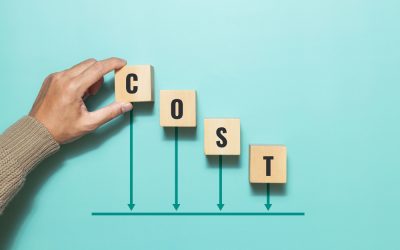“Many receive advice, only the wise profit from it.” Harper Lee
Have you ever run a P&L on your tap room business and compared it to your distribution business?
By now, everyone knows that the tap room is the most profitable part of your brewery. But unless your financial systems are set up to track and report on the tap room business separately, you don’t know how much money you’re making (or could be making).
On average, you can sell a 1/2 barrel of beer for $600 through the tap room, compared to a $150 sale to the distributor. In simple math, you’ll make 4x to 5x more revenue on the same volume of beer by selling to the consumer directly.
In this article we’ll look at the financial metrics of the tap room compared to distribution.
We’ll also set you up with tips on how to set up your financial reporting so that you can see the actual profitability of your tap room. Assuming that you’re profitable is one thing, but seeing is believing.
- Tap room financial metrics
- Distribution financial metrics
- Set up your Financials to track Tap room results
Tap Room Financial Metrics
The primary financial metrics for brewery operations are revenue, gross margin and EBITDA per brewer barrel (31 gallons). These metrics can further be broken down and used to measure your tap room and distribution business separately.
Below are the key financial metrics in each category.
- Revenue per BBL
- Total beer sold in $ divided by beer sold in BBL
- Example: $100,000 sales divided by 100 BBLs = $1,000 revenue per BBL
- Develop revenue expectations based on how the beer is sold and the pricing: full pints, samples, growlers, etc.
- Gross margin per BBL
- Total margin $ divided by total beer BBL sales
- Example: $80,000 margin divided by 100 BBLs sold = $800 margin per BBL
- Gross margin is the difference between Revenue and Cost of Goods (beer). Develop a margin expectation based on the cost of the beer.
- EBITDA per BBL
- Total EBITDA $ divided by total beer BBL sales
- Example: $40,000 EBITDA $ divided by 100 BBLs sold = $400 EBITDA per BBL
- EBITDA is Earnings Before Interest, Taxes, Depreciation and Amortization. It’s the difference between Gross Margin and Operating Expenses to run your tap room.
Revenue, margin and EBITDA will vary greatly based on brewery size, market conditions and operating structure. Industry numbers can be a useful guide, but in my experience it is more relevant to measure and benchmark against your own tap room results.
Merchandise and swag sales will influence the number as well. Track these revenue lines separately so as not to distort beer sales per BBL.
Set up a spreadsheet to track these tap room metrics: revenue per BBL, gross margin per BBL and EBITDA per BBL. Compare the numbers to historical results and industry averages and see where you fall within the $/BBL range.
Distribution Financial Metrics
Tap room sales have great margins and profitability, but are limited by the size of your space and the number of customers you can serve. Selling to wholesalers provides the ability to scale your operation and leverage the distributor’s sales, marketing and delivery expertise
The distributor volume growth does come at a cost however, as you’ll give up a lot of gross margin (aka gross profit) compared to tap room sales.
Distribution financial metrics are the same as the tap room: revenue, margin and EBITDA per BBL:
- Revenue per BBL
- Total beer sold in $ divided by beer sold in BBL
- Example: $30,000 sales divided by 100 BBLs = $300 revenue per BBL
- Develop expectations based on pricing to distributor and draft / package mix. Say, $150 per 1/2 BBL and $35 per Case.
- Gross margin per BBL
- Total margin $ divided by total beer BBL sales
- Example: $15,000 margin divided by 100 BBLs sold = $150 margin per BBL
- Gross margin is the difference between Revenue and Cost of Goods (beer). Develop a margin expectation based on the cost of the beer compared to the price you sell to the distributor..
- EBITDA per BBL
- Total EBITDA $ divided by total beer BBL sales
- Example: $9,000 EBITDA $ divided by 100 BBLs sold = $90 EBITDA per BBL
- EBITDA is Earnings Before Interest, Taxes, Depreciation and Amortization. It’s the difference between Gross Margin on sales to distributors and Operating Expenses to run your brewery.
Sales to distributors provides scale and volume for your brands. However, the margins on these sales are not nearly as exciting as tap room margins. Do the math, make sure your pricing is correct as your ‘margin’ for error is much lower on sales to distributors.
Set up the Financials to Track Tap Room Results
The tap room and distributor sales are two different businesses within your brewery. To understand the profitability of each business unit, set up your general ledger to capture the results of each one.
Revenues, expenses, and EBITDA need to be separately identifiable for tap room and distributor results. Otherwise, you’ll never really know how profitable each business is (or whether you’re profitable at all).
The General Ledger chart of accounts sets the structure for your financial reporting. The chart of accounts is basically a listing of all the income and expense items you want to track and report on. All the revenue and expenses of the tap room should be listed and have their own accounts. Likewise, all the revenue and expenses of the distribution business should have its own accounts.
A common mistake that breweries make is to combine all the results together. This makes it difficult if not impossible to determine exactly what the profit is for tap room vs distribution. These are separate businesses – treat them that way and set up separate accounts in your financial system.
Wrap Up + Action Items
Tap room and distribution metrics provide an easy way to view revenue, margin and EBITDA per BBL. These metrics can then be compared against industry averages and your own historical results so that you can see whether you’re improving or in need of improvement.
To get started, calculate your tap room and distribution metrics using the bullet points above.
Review your current financial reporting. Does your chart of accounts allow you to separately report on financial results in from the tap room business and the distribution business? If not, make it happen captain.
What you don’t know can hurt you. Use the brewery metrics and set up a P&L to track results. Seeing is believing.
Craft Brewery Financial Training Members: To get more details and step by step instructions on this topic, Log In to your account and access the Online Courses from the Member Menu.
Not a member yet? Sign up and get instant and unlimited access to Craft Brewery Financial Training online courses, resources and guides.





